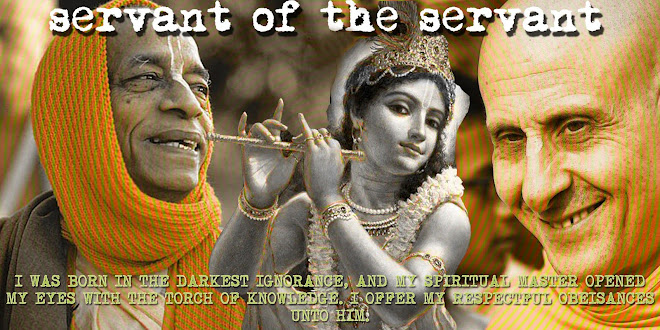One time I used the word “dogmatic” and a young boy asked me what does “dogmatic” mean? Interestingly, I did not have a convincing answer. This made me think a little bit. The dictionary definition is “
a principle or set of principles laid down by an authority as incontrovertibly true”. From a cultural perspective, any phenomenon that does not have supportive evidence can be deemed dogmatic. By both accounts, one may argue that the tenets of Krishna consciousness is dogmatic. Because it is laid down by an authority as absolute truth and there is little physical evidence on the earth plane to validate Krishna or His activities like for example Him lifting the Govardhan Hill.
As devotees of Krishna, when rational thinkers debate with us, it is important to present Krishna consciousness in a way that is “not” dogmatic. If the opposite of dogma equals presentation of evidence, then we are in a tough spot because we do not have physical evidence to categorically talk about Krishna. How then can we present Krishna in a “non-dogmatic” light?
Srila Prabhupada denied that man landed on the moon despite live tv coverage. Once in a public meeting, when he was asked, he countered by asking “how do you know man landed on the moon?”. The man replied “I know because the American scientists say so”. Srila Prabhupada simply said “well, you believe Americans, we believe Shastra” Now, this may sound like a simple answer. But what Prabhupada pointed out to the rational thinker is that they also “believe” someone just as we “believe” someone. By tacitly implying you are no less dogmatic than me, why is your statement superior to mine? They may argue on the strength of the evidence cited, but still since they are not experts in that field themselves, still they have to "believe" an expert.
But scientists are not against belief, they are against non-testable beliefs. For example, scientists claim that dark matter and dark energy pretty much constitutes 96% of mass in the universe. This is a widely held “truth” within the physicist world. If I want to be a physicist, I have to agree to this premise. It is a mathematically derived premise from sample data. So this presupposition has to be accepted on “belief” by eminent scholars in the field. This method of accepting a principle by an authority as truth is also practiced extensively in all fields of science. Are then all students of science, scientists and rational thinkers dogmatic? The answer is no. The reason being, they do not accept it as incontrovertible truth. In other words, the truths or presuppositions such as dark matter constituting 96% of mass can be falsified or tested or changed if we can find evidence controverting the original theory. So in that sense, scientists claim an upper hand to religious super-naturalism. Although in reality rarely one will go against established science (thus making them equally dogmatic), still that theoretical option is available for one who is interested even if that means one's career can be put in jeopardy.
The option to test and refute is not available to religionists because it is either true or false, end of story! This non-testable, non-falsifiable attitude towards truth is the reason rational thinkers consider religion as dogma.
In conclusion, we can present Krishna in a "non-dogmatic" light by addressing two points (1) to point out that not everything of this world that is accepted as common or mainstream has categorical evidence thus there are shades of dogma involved among rationalists (2) the science of Krishna can be tested and if necessary falsified.
As Srila Prabhupada endearingly asks many times to total strangers about the process of Krishna consciousness - “what is the loss?”
Hare Krishna



